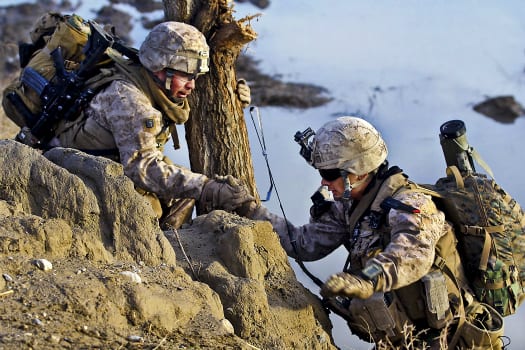Ex-Army Officer Accuses CIA of Obstructing Pre-9/11 Intelligence-Gathering
Sunday, 20 January 2013 07:46By Paul Church and Ray Nowosielski, Truthout | Report
A decorated ex-clandestine operative for the Pentagon offers new revelations about the role the US Central Intelligence Agency (CIA) played in the shut-down of the military's notorious Able Danger program, alleged to have identified five of the 9/11 hijackers inside America more than a year before the attacks.
Lt. Col. Anthony Shaffer joins a growing list of government officials accusing former CIA director George Tenet of misleading federal bodies and sharing some degree of blame for the attacks. Shaffer also adds to a picture emerging of the CIA's Bin Laden unit as having actively prevented other areas of intelligence, law enforcement and defense from properly carrying out their counterterrorism functions in the run-up to September 2001.
Shaffer spoke to documentary filmmakers John Duffy and Ray Nowosielski in late 2011, on the day Judicial Watch successfully forced the Department of Defense (DOD) to declassify many Able Danger documents through their Freedom of Information Act (FOIA) lawsuit. The materials newly in the public domain allowed Shaffer to speak more candidly than ever before. While he maintains the DOD bureaucracy was always the main obstacle for Able Danger, he offers fresh disclosures on the role played by the CIA in the shut-down of its military offensive.
In the wake of the devastating African embassy bombings of 1998, which left more than 200 dead, US Special Operations Command (SOCOM) - responsible for the Pentagon's secret commando units - brought together specialists from the Defense Intelligence Agency (DIA) to begin mapping the al-Qaeda network. Based in the Information Dominance Center - also referred to as Land Information Warfare Activity, or LIWA - at Fort Belvoir, Virginia, the team's advanced data-mining software found connections between known terrorists and subjects with matching profiles. This highly classified project was code-named Able Danger.
The project first came to public attention in June 2005, nearly one year after the 9/11 Commission released its report, when Congressman Curt Weldon gave a special orders speech on the floor of the House of Representatives. Following attacks on Weldon's credibility, five Pentagon whistleblowers came forward to back up his claims, including Lt. Col. Tony Shaffer, a CIA-trained senior intelligence operations officer, Bronze Star Medal recipient and reserve Army lieutenant colonel with more than 22 years in the intelligence community.
Shaffer now claims the media's focus on the data-collection aspect of Able Danger missed the point. "Data mining kind of became, to use a film term, the MacGuffin," says Shaffer, a reference to a narrative device - often used in Alfred Hitchcock movies - which drives the plot while ultimately having no relevance to it. "That was the throwaway they wanted people to focus on. The overall project was something that covered the entire command structure of [SOCOM]. The project was put together to give the national command authority options."



Geen opmerkingen:
Een reactie posten